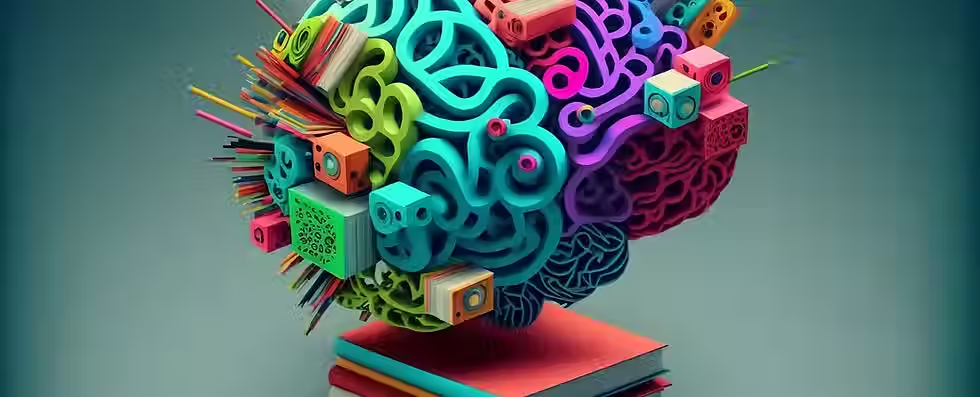How Higher Education Leaders can Navigate an AI-driven Future
- Gustavo Yamasaki
- May 13
- 3 min read

As AI continues to reshape both education and the workforce, higher education leaders need to ensure that their institutions are prepared to reimagine teaching and learning and help students build critical new skills.
On April 30, Adobe hosted an event focused on success strategies for driving innovation on campus, transforming the educational experience, and creating a competitive edge with generative AI. Our speakers shared best practices and research to help university presidents, provosts, and other senior leadership navigate the challenges and opportunities ahead.
Positioning Indiana University for a changing landscape
Our first speaker, Dr. Justin Hodgson, is Associate Professor of Digital Rhetoric and Director of the Digital Gardener Initiative at Indiana University. He explained that he and his colleagues have implemented a number of programs to upskill students and faculty in the use of AI, including:
Professional development through a Faculty Fellows program as well as faculty engagement workshop series
Individualized support with teaching and learning centers on every IU campus
Modules, guides, and self-paced learning through Canvas courses like Basics of Prompt Engineering, Ethical Issues and Limitations of Generative AI, and Generative AI for Studying and Learning as well as a special IU Expand course called GenAI Essential Skills
Hodgson and colleagues are encouraging faculty to explore ways to make their teaching more effective by using AI as a teaching assistant, a research assistant, a role-playing and skill demonstration partner, and even a partner for creativity and expression.
“If we are going embrace this moment as a kind of catalyst of change and transformation,” he said, “and think about how we build better lectures or how we build better learning experiences, then we want to talk about and help faculty understand all the different ways in which this might work.”
Using AI-powered tools to assist with studying and comprehension
Next, Chitra Mittha, Director of Product Marketing for Adobe’s Education team, shared research showing that college students’ top barriers to learning include information overload and heavy reading requirements that contribute to burnout. She also shared that AI is helping students overcome these barriers in the following ways:
33% of students use document summaries before, during, and after reading to understand key takeaways.
Students improve comprehension by asking AI tools questions, and they also organize study materials and navigate key themes and topics with AI.
17% of students who use AI weekly are 17% less likely to experience anxiety and stress due to academic performance.
AI helps students streamline reading and time spent organizing notes, and AI-generated study guides and flashcards improve retention.
Tools like Adobe Acrobat AI Assistant support study efficiency.
While AI tools can clearly help students study and learn more effectively, Mittha noted that students worry about the accuracy of the information generated by AI.
“Seventy-eight percent of students are saying that it is really important to cite reliable resources,” she said. “So this shows that there is an inherent orientation toward academic integrity.” She said that trustworthy tools like Acrobat AI Assistant can help alleviate worries and offer source attribution to ensure accuracy.
Using AI to help students transition into the professional world
Our final speaker was Joshua Meredith, a Client Relationship Executive at Deloitte specializing in higher education. He said that, while there’s a lot of new technology on college campuses, there’s also a technology skills gap in the workforce. He shared details from a recent study that found that students who have significant AI skills receive 35% higher salaries than those who don’t. “Employers want those skills to create the workforce of tomorrow,” he said.
To teach students to use AI skillfully, Meredith suggested that faculty think about transforming their traditional lessons and assessments. For example:
Instead of asking students to spend weeks researching a thesis in the library, encourage them to use a tool like Acrobat AI Assistant to cull and summarize information faster.
Instead of asking students to write a 5–10 page paper, challenge them to create a visual presentation deck and deliver the presentation live in class.
Meredith also suggested that institutions offer micro-credentials or mini-courses on AI to get students up to speed and build their confidence. “Schools that adopt AI will help their students achieve greater success in school and in their jobs,” he said.
To hear more details about our speakers’ perspectives and strategies, watch the webinar recording. And to find out more about driving academic outcomes and career-readiness with Adobe’s AI and creative tools, explore the Adobe Creative Campus program.



